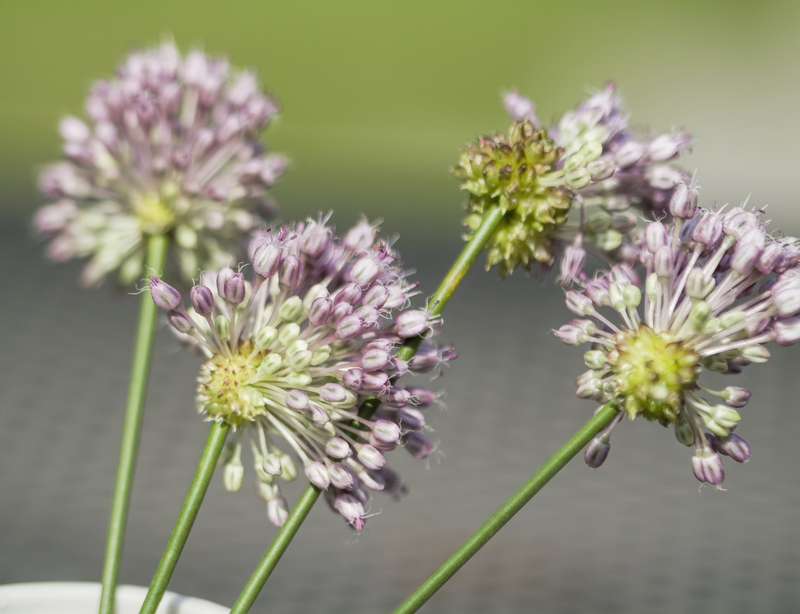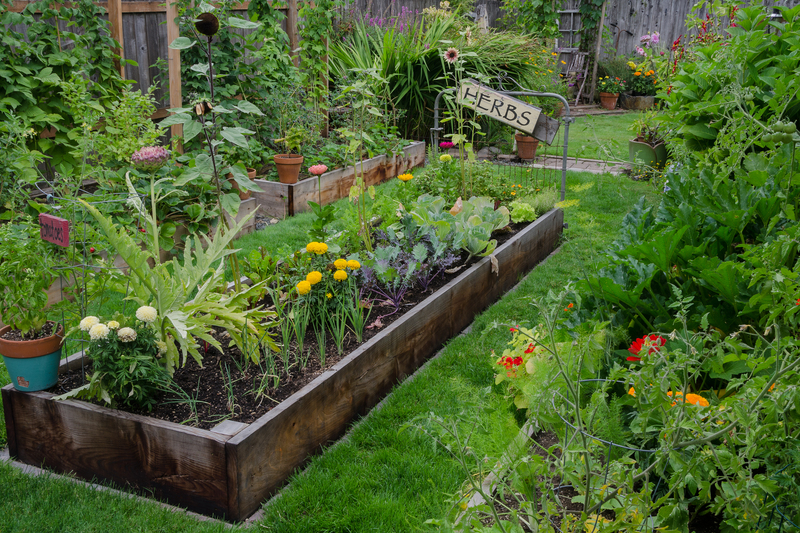Springing Back to Life: Starting Your Garden's Renewal
Posted on 18/08/2025
Springing Back to Life: Starting Your Garden's Renewal
As winter's chill fades and the promise of spring fills the air, gardens everywhere are ready to awaken from their slumber. The arrival of spring is the perfect opportunity for garden renewal, transforming tired beds into blossoming oases. In this comprehensive guide, we'll walk you through the essential steps for revitalizing your outdoor space and ensuring your garden springs back to life, brimming with color, texture, and growth.
Why Spring Is the Best Time for Garden Renewal
Spring signals a time of natural growth and new beginnings. After months of dormancy, plants, soil, and wildlife respond enthusiastically to longer days and warmer temperatures. Garden renewal in spring capitalizes on these environmental cues, ensuring robust root development and optimal flowering for the seasons ahead.
- Optimal Growth Conditions: Spring's moderate temperatures and steady rainfall create ideal growing conditions for most plants.
- Fresh Plant Stock: Nurseries and garden centers are stocked with the healthiest seeds and young plants in the spring.
- Soil Revitalization: The winter rest allows soils to replenish, making spring the best time to amend and enrich garden beds.
- Early Pest Management: Renewing your garden in spring lets you get ahead of common pests before they become problematic.

Assessing Your Garden After Winter
Before jumping into planting and pruning, take time to assess the current state of your garden. This evaluation sets the foundation for a successful garden revival.
Inspect Soil and Beds
Check for compaction, erosion, and pooling water. Healthy soil is the cornerstone of a thriving garden renewal. If the soil is overly wet or compacted, allow it to dry before working it.
Survey Plants for Damage
Look at perennial plants, shrubs, and trees for signs of winter damage. Trim away any dead or broken branches, and remove mushy or diseased plant parts to prevent the spread of pathogens.
Test Soil Health
Spring is ideal for soil testing. Test pH and nutrient levels to understand what amendments your garden might need for a healthy garden refresh.
Check Hardscape Elements
Walkways, fences, garden beds, and containers may need cleaning, repair, or replacement after winter's wear and tear. Address these structures before focusing on planting.
Essential Spring Garden Tasks: Prepping for Renewal
Once you've assessed your garden, it's time to get your hands dirty! Here's an in-depth guide to crucial tasks for kickstarting your garden's spring revival:
1. Clearing and Cleaning
- Remove fallen leaves, branches, and debris from flower beds, lawns, and pathways.
- Clean out old annuals and make compost from organic materials.
- Wipe down tools, containers, and support structures -- cleanliness is essential to prevent disease transmission.
2. Pruning and Deadheading
- Trees and Shrubs: Cut back dead or damaged wood, shaping as necessary.
- Perennials: Trim away last year's dead stems and foliage to encourage new growth.
- Roses: Spring pruning ensures strong flowering canes and healthy blooms.
3. Bed Preparation and Soil Enrichment
- Loosen soil with a fork or tiller, breaking up compaction and improving aeration.
- Incorporate organic matter such as compost, leaf mold, or well-rotted manure.
- Mulch: Top beds with a fresh layer of mulch to conserve moisture and suppress weeds.
- Address drainage issues by adding sand, gravel, or adjusting bed elevation.
4. Planning and Planting for a Renewed Garden
- Design new planting schemes for color, texture, and sequential blooming.
- Sow hardy annuals, vegetables, and direct-seed flowers as soon as soil is workable.
- Start tender seeds indoors or in greenhouses to transplant later.
- Replant perennials and divide clumps that have outgrown their space for a lush spring garden revival.
5. Early Fertilization and Pest Control
- Apply slow-release, balanced fertilizers when planting or as new growth emerges.
- Inspect for early signs of pests and begin integrated pest management methods -- including barriers and beneficial insects.
Choosing the Right Plants For Spring Garden Renewal
Plant selection is key to a successful garden renewal in spring. Opt for plants that suit your soil type, sun exposure, and desired color palette. Here are some versatile choices for a vibrant 'springing back to life' effect:
- Perennials: Daylilies, coneflowers, salvia, hostas, astilbes, and bleeding hearts - ensure reliable blooms year-after-year.
- Annuals: Marigolds, petunias, pansies, zinnias, and snapdragons inject instant color to renewed gardens.
- Bulbs: Tulips, daffodils, crocus, and hyacinths offer dramatic early-spring displays.
- Vegetables: Lettuce, spinach, peas, radishes, and carrots thrive in cool spring soils and are quick to harvest.
- Shrubs: Forsythia, lilacs, hydrangeas, viburnum, and azaleas add structure and long-term beauty.
Pro Tip:
Mixing perennial and annual flowers with edible plants creates a dynamic and functional garden renewal, attracting pollinators and providing fresh produce.
Strategies for Long-Term Success in Garden Renewal
Spring is just the beginning! To keep your revitalized garden thriving, adopt these smart strategies for continued growth and beauty:
Regular Watering and Mulching
- Establish a consistent watering routine, especially for new plantings.
- Use mulch to retain soil moisture and maintain even soil temperatures.
Early Weed Control
- Hand-pull or hoe weeds as soon as they appear--young weeds are easier to manage for an ongoing garden refresh.
- Apply pre-emergent herbicides only if necessary, and choose organic options where possible.
Seasonal Maintenance
- Deadhead spent flowers to encourage repeat blooms and tidy appearances.
- Monitor for pests and diseases; act quickly to resolve problems.
- Replenish mulch and top-dress soil with compost throughout the season.
Document Your Garden's Progress
Keep a garden journal or take photos to track what works well and what could be improved for next year's garden renewal. This record is invaluable for building on your success.
Eco-Friendly Tips for Sustainable Garden Renewal
Creating a vibrant spring garden can and should be done with the environment in mind. Here are top recommendations for an eco-conscious approach as your garden springs back to life:
- Composting: Recycle garden and kitchen waste into rich soil amendments, reducing landfill load.
- Rainwater Harvesting: Collect spring rains in barrels for supplemental watering during dry spells.
- Native Plants: Incorporate region-specific natives to support local pollinators and reduce maintenance needs.
- Natural Mulches: Use shredded bark, straw, or leaf mold instead of synthetic mulches.
- Limit Chemical Inputs: Favor organic fertilizers and pest control, supporting soil health for future garden renewals.
Common Pitfalls in Spring Garden Renewal--and How to Avoid Them
Even the most enthusiastic gardener can run into trouble with spring garden refresh projects. Be mindful of these common mistakes:
- Too Early Planting: Planting before your zone's last frost date can kill tender plants. Use cloches or row covers if you must plant early.
- Ignoring Soil Quality: Don't plant in poor, compacted, or unamended soil--plants will struggle to thrive and renew.
- Overwatering: Newly renewed gardens need balanced watering; soggy roots are just as dangerous as dry ones.
- Skimping on Mulch: Forgoing mulch leaves your beds vulnerable to weeds and moisture loss.

Creating a Year-Round Renewal Plan
While springing your garden back to life is a wonderful annual ritual, true success comes from ongoing care and planning. With these tips, your spring garden revival can become a year-round showcase:
- Implement succession planting for continuous harvests and staggered blooms.
- Update and expand beds as you learn what thrives with each season of garden renewal.
- Add new features--such as birdbaths, raised beds, or vertical gardens--each year for fresh interest.
- Consider perennial edibles and pollinator-friendly plants to boost ecosystem health and lower long-term maintenance.
Conclusion: Let Your Garden Spring Back to Life
Spring is the season of hope and possibility in the garden. Whether you're restoring a small patch of earth or planning a grand landscape overhaul, spring garden renewal offers renewed joy, beauty, and bounty. Take time to assess, clean, amend, and plant with care. Soon enough, you'll watch your garden spring back to life, rewarding you with lush greens and brilliant blossoms for months to come.
Looking for more tips and inspiration? Subscribe to our gardening newsletter to receive updates and fresh ideas for every season of your garden's renewal!
Let this be the year your garden shines brighter than ever--bursting with life, color, and the sweet promise of spring reborn.

